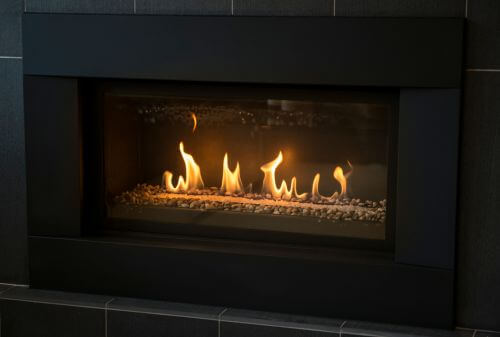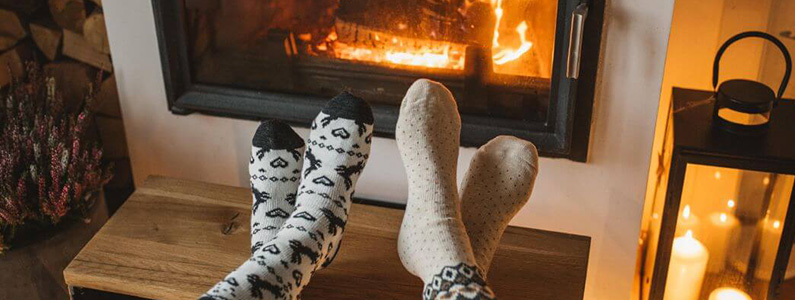As the cold winds of winter approach, there’s nothing quite as comforting as the warm, flickering glow of a gas fireplace. Gas fireplaces offer a convenient and efficient way to heat your home while creating a cozy ambiance. However, to ensure that your gas fireplace operates safely and efficiently throughout the winter season, it’s essential to perform regular maintenance.
Below is a step-by-step walkthrough of winter maintenance for gas fireplaces, helping you keep your home warm and inviting all season long.
Introduction to Gas Fireplaces
Gas fireplaces have become increasingly popular in recent years due to their ease of use and energy efficiency. Unlike traditional wood-burning fireplaces, gas fireplaces don’t require chopping wood, cleaning up ashes, or dealing with smoke. Instead, they rely on natural gas or propane to provide a clean, convenient, and controllable source of heat and ambiance.
Before we dive into the winter maintenance tips, let’s take a closer look at the different types of gas fireplaces you might encounter:
1. Direct Vent Gas Fireplaces
Direct vent gas fireplaces are sealed units that draw in outside air for combustion and vent exhaust gasses outside. They are highly efficient, with minimal heat loss and no impact on indoor air quality. These fireplaces come in various styles, including traditional, modern, and linear designs.
2. Ventless Gas Fireplaces
Ventless or vent-free gas fireplaces don’t require a chimney or external venting. Instead, they use a catalytic converter to clean and recirculate the indoor air, making them an excellent choice for homes without chimneys. However, they are not allowed in some regions due to potential indoor air quality concerns.
3. Gas Fireplace Inserts
Gas fireplace inserts are installed within an existing masonry fireplace, transforming it into an efficient and convenient heating source. They come in various sizes and styles and offer improved energy efficiency compared to open wood-burning fireplaces.
4. Gas Log Sets
Gas log sets are designed to be placed inside an existing fireplace to provide a realistic-looking flame and heat. They are a cost-effective way to convert a wood-burning fireplace into a gas fireplace.
Now that we’ve covered the basics, let’s get into the essential winter maintenance tips to ensure your gas fireplace is ready for the colder months.

Winter Maintenance Fireplace Tips
1. Check for Gas Leaks
Safety should always be your top priority when it comes to gas appliances. Before lighting your gas fireplace for the winter, checking for any potential gas leaks is crucial.
Here’s how to do it:
- Inspect the gas line: Visually inspect the gas supply line for any signs of wear, damage, or corrosion. If you notice any issues, contact a professional technician for repairs.
- Use a gas leak detector: Consider using a gas leak detector solution or a gas leak detection device. Apply the solution or run the device along the gas line connections and fittings to check for leaks. If you detect a leak, shut off the gas supply and call a professional immediately.
2. Clean the Fireplace
Cleaning your gas fireplace is essential for both safety and aesthetics. Dust and debris can accumulate over time, affecting the appearance and performance of your fireplace.
Here’s a step-by-step guide for cleaning:
- Turn off the gas supply: Before starting any cleaning, make sure to turn off the gas supply to the fireplace.
- Remove the glass front: If your gas fireplace has a glass front, carefully remove it for cleaning. Follow the manufacturer’s instructions for proper removal and cleaning techniques.
- Clean the glass: Use a glass cleaner specifically designed for fireplace use to clean the glass front. Avoid using abrasive materials or chemicals that may damage the glass. Wipe it clean with a soft, lint-free cloth.
- Clean the interior: Gently vacuum the interior of the fireplace to remove dust, dirt, and debris. Pay close attention to the burner and pilot assembly. Use a soft brush or cloth to wipe down any remaining residue.
- Inspect the logs: If your gas fireplace has decorative logs, check for any damage or signs of wear. Clean them with a soft brush or cloth if necessary.
3. Inspect the Ignition System
The ignition system of your gas fireplace is responsible for lighting the burner and ensuring a steady flame. Regular inspection can prevent ignition issues during the winter. Here’s what to do:
- Inspect the pilot light: Make sure the pilot light is burning steadily. If it’s flickering or goes out, it may need cleaning or adjustment. Refer to your owner’s manual for guidance.
- Check the thermocouple and thermopile: These safety devices are responsible for shutting off the gas supply if the pilot light goes out. Ensure they are clean and positioned correctly.
- Test the ignition switch: Turn on your gas fireplace using the ignition switch to ensure it lights up without any issues. If you encounter problems, contact a professional technician for repairs.
4. Check for Venting Issues
Proper venting is crucial for the safe operation of gas fireplaces. Check the venting system to ensure it’s clear of obstructions and functioning correctly:
- Inspect the vent termination: Make sure the vent termination (the part of the venting system that extends outside) is free from debris, bird nests, or other obstructions.
- Check for drafts: Check the fireplace for drafts when it’s not in use. If you feel cold air coming from the fireplace, it may indicate a venting issue. Contact a technician to inspect and address the problem.
- Test the carbon monoxide detector: If your gas fireplace is equipped with a carbon monoxide detector, test it to ensure it’s working correctly.
5. Replace Batteries in Remote Controls and Thermostats
If your gas fireplace is equipped with remote controls or thermostats, replacing the batteries regularly is essential. Low batteries can lead to unreliable operation and may even prevent the fireplace from turning on when you need it most.
6. Check for Gas Pressure and Burner Efficiency
Ensuring the correct gas pressure and burner efficiency is crucial for both safety and efficiency. Here’s what you can do:
- Inspect the gas pressure: Contact a professional technician to check the gas pressure and adjust it if necessary. Proper gas pressure is essential for a consistent flame and efficient heating.
- Clean the burner: Remove and clean the burner assembly according to the manufacturer’s instructions. This can improve combustion efficiency and flame appearance.
7. Schedule Professional Maintenance
While many of the maintenance tasks can be performed by homeowners, it’s essential to schedule professional maintenance at least once a year. A certified technician can perform a thorough inspection, clean internal components, and make any necessary adjustments or repairs. Professional maintenance ensures the long-term safety and performance of your gas fireplace.
8. Safety Precautions
Lastly, it’s essential to observe safety precautions when operating your gas fireplace:
- Use a fireplace screen: To prevent accidents and keep children and pets safe, use a fireplace screen or gate to create a barrier in front of the fireplace.
- Keep flammable items away: Ensure that flammable materials, such as curtains, furniture, and decorations, are at a safe distance from the fireplace.
- Install carbon monoxide detectors: Install carbon monoxide detectors in your home, especially in rooms with gas appliances. Test them regularly to ensure they are working correctly.
- Know how to shut off the gas: Familiarize yourself with the location of the gas shut-off valve for your fireplace and know how to turn it off in case of an emergency.
A well-maintained gas fireplace can provide warmth, comfort, and ambiance during the chilly winter months. Following these winter maintenance tips ensures that your gas fireplace operates efficiently and safely throughout the season. Remember to prioritize safety, schedule professional maintenance, and enjoy the cozy atmosphere your gas fireplace brings to your home. With proper care, your gas fireplace will be a reliable source of warmth and relaxation for many winters to come.

